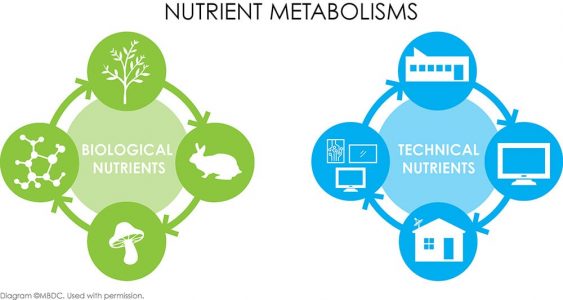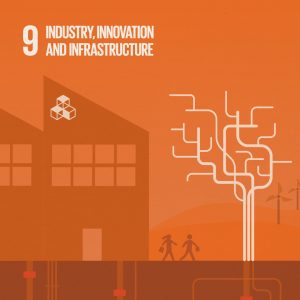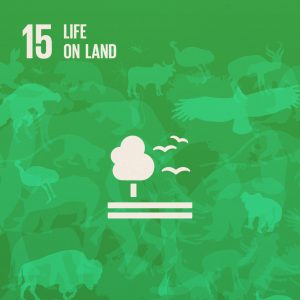“We see a world of abundance, not limits. In the midst of a great deal of talk about reducing the human ecological footprint, we offer a different vision. What if humans designed products and systems that celebrate an abundance of human creativity, culture, and productivity? That are so intelligent and safe, our species leaves an ecological footprint to delight in, not lament?” William McDonough, Michael Braungart, Cradle to Cradle
What if?
The ecological footprint McDonough and Braungart refer to measures how much of nature we use compared to how much nature has to offer without going broke and how much waste we produce compared to Earth’s capacity to absorb that waste. Bottom line: our systems and habits of production and consumption have created an enormous planetary debt of natural capital when it comes to how much of Earth’s resources we consume, and we are way past the limit when it comes to overwhelming the planet’s capacity to absorb the wastes we produce. The way we do things now can be summarized in three words: take, make, waste.
McDonough and Braungart offer possibilities for consumption and production so different from current patterns and their outcomes that they may sound preposterously unrealistic. But preposterous they are not. On the contrary, they are not only possible; they are necessary.
The nations of the world agree.
In 2015, the global community of nations committed to seventeen Sustainable Development Goals (SDGs) to address the global grand challenges of our time. One of our global grand challenges is to transform the production and consumption of goods and services because the Earth is not an infinite source of raw materials, nor is it an infinite sink to absorb our wastes. Thus, SDG 12, Ensure Sustainable Consumption and Production Patterns.
The way McDonough and Braungart put it in Cradle to Cradle, “Nature doesn’t have a design problem. People do.”
Going forward, they argue, we need a “design framework characterized by three principles derived from nature:
Everything is a resource for something else. In nature, the “waste” of one system becomes food for another. Everything can be designed to be disassembled and safely returned to the soil as biological nutrients, or re-utilized as high-quality materials for new products as technical nutrients without contamination.”

A nutrient metabolisms diagram. All photocredit to MBDC.
Possible? Not only possible, the Cradle to Cradle Products Innovation Institute certifies products that are designed and made according to the Cradle to Cradle design principles.
Biomimicry is another nature-inspired design approach with the potential to transform production and consumption and achieve the outcomes of SDG 12. Janine Benyus wrote the book Biomimicry and explains that biomimicry uses nature as a model for how to make things, as a measure for evaluating the effectiveness and rightness of human innovation, and as a mentor to teach us how to do things sustainably. As Benyus puts it, “When we look at what is truly sustainable, the only real model that has worked over long periods of time is the natural world.”
The Biomimicry Institute “empowers people to create nature-inspired solutions for a healthy planet.” Check out some of the nature-based solutions that have already been developed. From the website: People are learning from termites how to create sustainable buildings. Modeling the front end of a bullet train after the beak of a kingfisher resulted in quieter trains, 15% less energy use, and 10% greater speed. How about learning from mosquitos how to create a “nicer needle?” Yup.
Want more? Check out The Land Institute (TLI), “a science-based research organization working to develop an alternative to current destructive agricultural practices.” TLI is committed to advancing what they describe as perennial grain crops and polyculture farming solutions.
Biomimicry was written in 1997. Cradle to Cradle in 2002, and the follow-up book The Upcycle was published in 2013. The Land Institute was founded in 1976.
That’s right, these innovative ideas have been around for a while; in some cases, for decades. What comes to mind when I think about this is a line from the film Back to the Future: “Hello, McFly…” The path to a sustainable future is an open secret, populated with ready and workable solutions that are inspired and game changing.
As it stands now, humanity is taking more, making more, and wasting more. We are stripping Earth’s living resilience and creating ever more waste of types and volumes that the planet and its living organisms (including humans) simply cannot absorb. Climate change, microplastics in our food, and pandemics like COVID-19 caused by ever-greater incursion into wild places are just three examples of a huge body of evidence that the way we do things just doesn’t work anymore, not if we want to survive and thrive.
The path we take going forward and the decisions we make about whether or not to change are up to us, but be forewarned. As American engineer, professor, and management consultant W. Edwards Deming put it: “It is not necessary to change. Survival is not mandatory.”
Wendell Berry, as usual, succinctly explains where we are: “We have lived our lives by the assumption that what was good for us would be good for the world. We have been wrong. We must change our lives so that it will be possible to live by the contrary assumption that what is good for the world will be good for us. And that requires that we make the effort to know the world and learn what is good for it.”
Knowing the world and learning what is good for it, and therefore what is good for humanity, are exactly what Cradle to Cradle, Biomimicry, and The Land Institute, among others, are all about. Their accomplishments validate their designs. Following their lead we can transform humanity’s design problem into design solutions for a sustainable world.
Citizens, businesses, and government all have responsibilities to get us there.
Learn about the SDGs & AU and our contributions related to this post.






